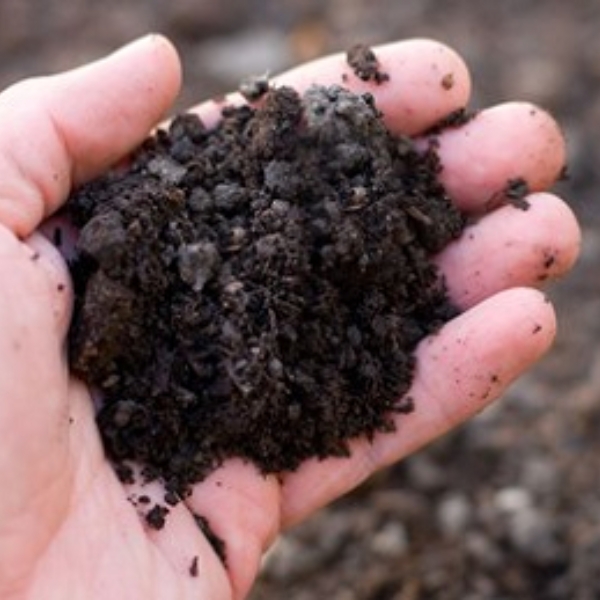The Value of Humate

Humic acid products have been around for several decades in the turf. However, if you ask professional turf managers what they actually do, you’re likely going to get a wide range of answers. This is not surprising since the real-world benefits to turfgrass will vary depending on where they are applied and what soil they’re applied to. In short, the physical makeup and current condition of the soil play a large part in how the turfgrass will respond to humic acid application. To better understand how humic acids benefit today’s professional, a basic understanding of how humic substances work and what they actually do in the soil and to the turfgrass is important.
The Basics of Humic Substances (Humates)
Humic substances, or humates, are the dark-colored organic compounds that remain after the natural degradation of biomatter that are resistant to further degradation. They are also the major organic ingredient of the soil. These humates are generally classified into three distinct categories: humic acid, fulvic acid and humin, with each category separated based on their solubility in water as a function of pH. It has long been recognized that humic substances have many beneficial impacts on both the soil and plant growth. Each of these categories has properties that help them enhance their effectiveness to complement turfgrass fertility programs.
Humins are the largest-sized molecules and can be hundreds of times larger than humic acids. It is very stable in the soil, but also very insoluble and not very active in chelating nutrients. The primary benefits of humin are improving the soil structure and increasing water holding capacity.

Humic Acids are medium-sized molecules that are much smaller than Humin but possess a higher cumulative surface area. They function as essential ion exchange and chelation agents because other elements readily bind to them in a form that can be easily absorbed by the turf roots and micro-organisms. The impact of humic acid in the soil normally is illustrated with increased cation exchange capacity (CEC), which is why humic acid granular applications are favorable. As humic acid naturally degrades over time, they become fulvic acid.
Fulvic acids are the smallest of the three category molecules, yet they are the most water soluble. Due to their small size, they can enter the turfgrass roots and leaf tissue while transporting complex nutrients. Fulvic acids increase the absorption quantity of nutrients and the efficiency of the turfgrass plant’s metabolic functions.
Humic Acid in the Turf World
Professional turfgrass managers have known about the benefits of humic acids for quite a long time. These benefits are grouped into two specific types of changes; chemical changes to the fixation properties of the soil and biological stimulates to the turfgrass plant and the activity of micro-organisms.
Humic acids chemically change the soil to provide numerous benefits such as:
- Promotes the conversion of N,P,K, Fe, Zn and other trace elements into forms available to the plant
- Reduces the reaction of phosphorus with Ca, Fe and Mg and alters them into a form that is plant available
- Retains water soluble inorganic fertilizers in the root zone and reduces leaching
- Improves and optimizes the uptake of nutrients and water by the turfgrass plant
- Provides extremely high cation-exchange capacity (CEC)
- Neutralizes both acid and alkaline soils by regulating the pH-value of the soil
- Frees up carbon dioxide from soil calcium carbonate to enable its use in photosynthesis
- Reduces the availability of toxic substances in the soil
Humic acids biologically stimulate the plant to provide benefits such as:
- Increases root growth, respiration and formation to enable better uptake of nutrients
- Enhances plant’s natural resistance defenses against environmental stress
- Stimulates the turfgrass plant’s natural enzymes and increases their production
- Stimulates plant growth by accelerating cell division and increasing rate of development in root systems
- Promotes the development of chlorophyll, sugars and amino acids in the turfgrass plant
- Stimulates the growth and proliferation of desirable micro-organisms
- Increases vitamin and mineral content of the turfgrass plant
With so many things going on in both the soil and turf plant, it’s easy to understand why some turf managers will see such varied differences with applications of humic acid. Depending on the particular soil, or in the case of golf course putting greens…sand, the turfgrass will benefit for more than just one simple aspect: it’s typically multiple benefits being seen at the same time. If the soil is heavier in clay content, applications of humic acid will help free up the nutrients by solubilizing them which will allow the plant to uptake them easier. In higher sand-based soils, humic acid applications increase the CEC ratio and helps triggers the plant’s natural defense mechanisms.
It seem clear that humic acid products are here to stay in the turf world. The key to optimizing them as a part of an overall management strategy relies heavily on knowing what you realistically expect from applications of humic acid that will vary from site to site.